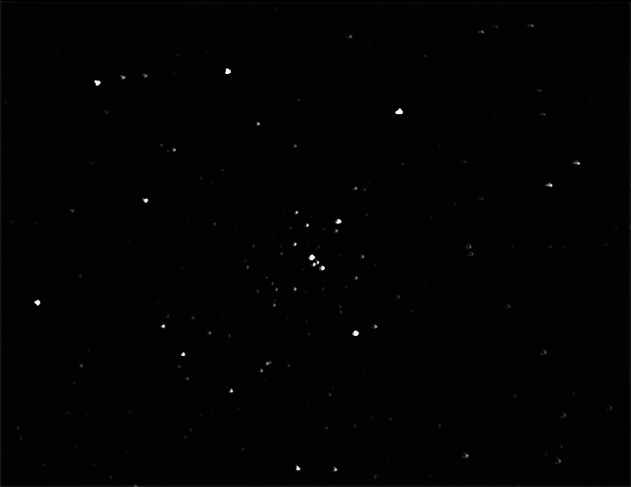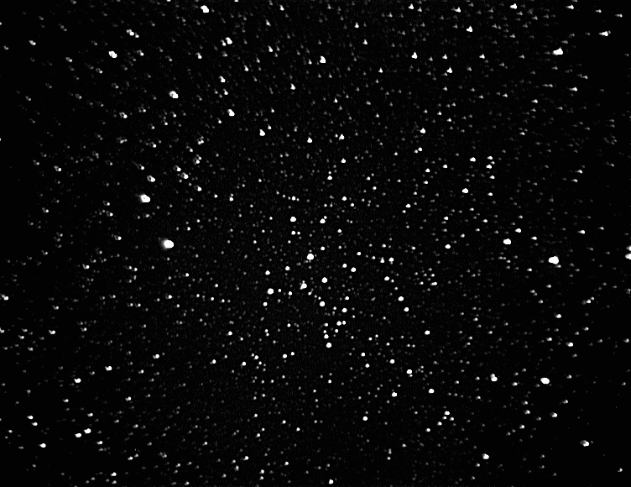

These two open clusers are less than 2° apart in the constellation of Vulpecula. The pictures below were taken with identical optics and camera within half an hour, so I believe the marked difference is real. Both are in a part of the Milky Way which explains the mass of stars in the picture of NGC 6830, but NGC 6823 is embedded in an emission nebula (which I have not resolved), so background stars are hidden. Both are put as 12 arc-minutes in diameter and the width of the frame is 265 arc-minutes.
 |
NGC 6823, in the constellation of Vulpecula. It is 6,000 light-years away and is about 50 light-years in diameter. There is a beatuful picture of it and its nebula in the APOD for 4th October 2004. Date and Time: 17th October 2010 23:01 to 23:09 UT Camera: MX716 Telescope: LX200 with 0.33 focal reducer Capture: star_mx7. 20 frames, 20" exposure Processing: star_mx7. Background, non-linear stretch 25. Registax. Stacked 20 frames, wavelets 1-2 = 5. PhotoImpact. Slight adjustent of contrast and brightness to reduce the background to black. |
 |
NGC 6830, in the constellation of Vulpecula. Date and Time: 17th October 2010 20:25 to 20:32 UT Camera: MX716 Telescope: LX200 with 0.33 focal reducer Capture: star_mx7. 19 frames, 20" exposure Processing: star_mx7. Background, non-linear stretch 25. Registax. Stacked 19 frames, wavelets 1-2 = 5. |
Home Back to DSOs